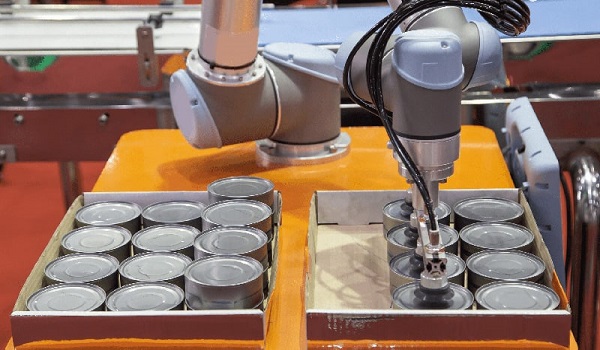Staff shortages remain the primary reason food manufacturers are investing in robotics, according to new research by Rabobank.
Food producers are increasingly turning to robots to boost labour productivity, retain employees, and assist under-skilled staff. Other motivations for adopting robotics include lowering production costs, raising utilization rates, reducing energy consumption, ensuring consistent output quality, and expanding product offerings without sacrificing economies of scale.
The research also sheds light on where manufacturers plan to deploy new robots in the production process. Key areas include tasks requiring substantial human intervention, such as raw material handling, internal logistics, and packaging operations.
In fact, according to Sebastian Schreijen, Rabobank’s senior analyst for consumer foods, as new-generation robots like automated guided vehicles and collaborative robots are developed to work alongside humans, the range of possible applications on the factory floor is quickly increasing,” Staffing issues were cited by more than 80% of respondents as the primary reason for their interest in robotics. Despite this interest, there are still concerns about the impact of robots on the production process.
Robots require minimal production volumes to be effective due to the high level of investment. This necessity may affect the variety of products and limit producers’ flexibility in pursuing commercial opportunities.
The typical payback period that food manufacturers apply for investments in robotization is about three to five years, and for strategic projects, that payback period may even be extended. Given that the investment level is typically higher than general capex requirements, producers are more wary of the mismatch between the cash outlay and the duration of supply contracts with their clients. Longer commitments from customers, such as food retailers, and innovation subsidies from the government may help to overcome this anxiety.
Manufacturers might also be hesitant to invest heavily in robotics due to the required skillset to operate them. While there is a shortage of production labour, digitally savvy personnel are even harder to find.
A final consideration around investment in robots concerns physical constraints: in older buildings, space is often too limited to safely deploy robots. Investment in robotization then depends on the timing of broader new construction plans.
While the report emphasizes manufacturers’ pursuit of robotization within the production process, Schreijen reminded businesses that robotization offers more than cost savings and higher productivity.
“Rather than using robots solely in the primary production process, robotizing safety inspections or cleaning tasks could improve employees’ work satisfaction levels and thereby increase the employer’s attractiveness for current staff and new hires,” Schreijen concluded. “Based on our survey and the ongoing stress in the labour market, we believe the theme of robotization is here to stay. We expect food processors to explore solutions that will help their businesses become more resilient in production and more agile towards customer demands.”


